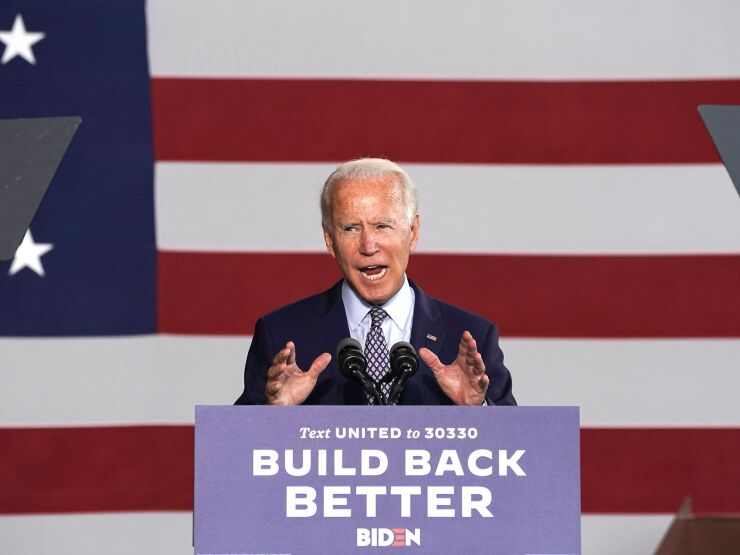Joe Biden on Tuesday unveiled a $775 billion plan to bolster childcare and care for the elderly that would be financed by taxes on real-estate investors with incomes of more than $400,000 as well as increased tax compliance by high-income earners.
The Biden campaign did not fully explain how the plan for a “caring economy” would be financed, but officials highlighted some tax breaks they would seek to eliminate to raise revenue.
In particular, a senior campaign official said a Biden administration would take aim at so-called like-kind exchanges, which allow investors to defer paying taxes on the sale of real estate if the capital gains are reinvested in another property. The official also said they would prevent investors from using real-estate losses to lower their income tax bills.

Biden is scheduled to deliver a speech on the policies Tuesday afternoon in New Castle, Delaware.
The proposal is the third plank of the Democratic nominee’s economic plan. It calls for universal preschool for three- and four-year-olds. It also eliminates the waiting list for home and community services under Medicaid, offers low-income and middle-class families a tax credit of as much as $8,000 to help pay for childcare and increases pay for caregivers and early childhood educators.
Senior campaign officials said Biden’s plan is informed by his experience as a single father after his first wife died in a car accident. If elected, Biden would immediately provide states and cities with fiscal relief to keep workers employed and crucial public services running, including direct care and child care services.
The plan would add 3 million jobs in the care and education sectors, including 150,000 community health workers in underserved communities. It also emphasizes investments in building childcare facilities. But the plan also calls for substantial resources in an innovation fund to help expand home- and community-based alternatives to institutional care.
On Monday, Biden teased his “caring economy” plan at a fundraiser hosted by Blackstone Group President Jonathan Gray, telling donors he wanted to make it easier for elderly Medicaid recipients to receive care at home.
Children of elderly parents “might not be able to cure their mother’s Alzheimer’s but they can make sure she doesn’t break her hip. Walk through the house and install handrails in the right spots in the bathroom or fix the doors so she doesn’t get stuck when she tries to open it,” he said.
Biden also defended his broader economic agenda, which includes a push for more union jobs, telling the high-dollar donors, “I hope I don’t offend any of you by that, but I really think it is totally consistent with a market economy and moving forward.”
Last week, Biden called for investing $2 trillion over four years on clean energy and setting a 100 percent clean-electricity standard by 2035. The first part of the economic plan is intended to foster manufacturing and American innovation.





